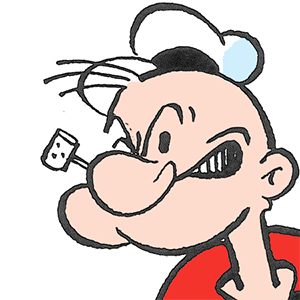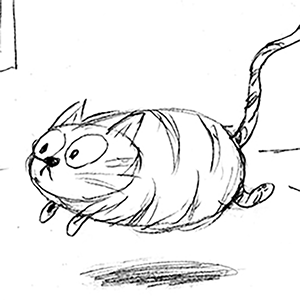Jason Mackey: What the Capitals did around Alex Ovechkin could inform the Penguins' thinking
Published in Hockey
PITTSBURGH — The surprise standing ovation greeting Alex Ovechkin on Thursday at PPG Paints Arena was not only appropriate but pretty darn cool. A worthy, longtime rival to the Penguins' stars, Ovechkin was feted for breaking the NHL's all-time goal-scoring record, something many thought would never be touched.
But Ovechkin, now 39 and coming off a 44-goal season, has something else these Penguins want: immediate plans.
His Capitals are in the postseason, the result of a Metropolitan Division title and a 111-point campaign that positions Washington as one of the teams to beat in the Eastern Conference.
They say imitation is the sincerest form of flattery, and I'm willing to bet Penguins fans wouldn't mind if president of hockey operations Kyle Dubas this summer copied some of what the Capitals have accomplished in constructing a core around Ovechkin.
"Without a doubt, there's a lot to take from an organization like Washington," Penguins coach Mike Sullivan said. "You've got to tip your hat to them. They've been able to reshape that team on the fly and remake it to the point where they're very competitive right now. They have one of the best records in the league."
How the Capitals have kept their Ovechkin window open should inform the thinking of Dubas, who certainly has a tough task ahead of him: ridding the Penguins of a few ugly contracts and acquiring younger players who can help the team now.
That's what the Capitals have done over the past few years, executing a series of moves that prove the Penguins' reboot doesn't have to take forever. If they're smart.
"They've done a nice job," Ryan Graves told me, talking about the Capitals. "You see a lot of teams go into that full rebuild that spend years doing it — Buffalo, San Jose, Chicago now.
"But if you can do a quick turnaround like that, it's pretty nice."
Before we get into what the Penguins can potentially learn from the Capitals process, let's first examine a few of the key milemarkers here:
— In the summer of 2022, the Capitals added a young center in Dylan Strome, who many expected to receive a qualifying offer from the Blackhawks. He didn't. The Capitals pounced and gave him a one-year deal worth $3.5 million. This year, Strome has centered the Capitals' top line, scoring 29 goals and piling up 81 points in 82 games, a career-best year.
— Ironically, the Capitals missed the playoffs in 2022-23, finishing with 80 points, the same as the Penguins this year. That jumpstarted a lot of this.
— More aggressive moves came in February 2023, when the Capitals traded Dmitry Orlov and Garnet Hathaway to the Bruins and used a first-round pick they acquired to add Rasmus Sandin five days later. He's now a fixture in Washington's top four.
— While Strome was one key part of replacing longtime center Nicklas Backstrom, what the Capitals did last June 19 was also important. That's when they identified Pierre-Luc Dubois as someone who was being under-utilized or miscast with the Kings and gave the 25-year-old a change of scenery.
It worked. Dubois, a former Penguins nemesis during his time with the Blue Jackets, has flourished in Washington. He has piled up a career-high 65 points to go along with a plus-26 rating — far better than the combined -20 mark that had defined his previous five seasons.
The move was a gamble due to Dubois' $8.5 million cap hit, but it has certainly paid dividends.
— Ten days later, the Capitals acquired goaltender Logan Thompson from the Golden Knights for a pair of third-round picks. All he did was go 31-6-6 during the regular season, with a 2.49 goals-against average and .910 save percentage, inking a five-year extension in January.
— The first day of free agency in 2024 saw the Capitals make two big moves to remake their back end: a smart trade for Jakob Chychrun from the Senators (giving up Nick Jensen and a third-rounder next year) and signing Matt Roy to a seven-year deal with an AAV of $5.5.
Chychrun wasn't going to re-sign in Ottawa. So, again, Washington swooped in and took advantage.
Roy is the oldest of the group at 30. They've teamed with John Carlson to give the Capitals a goal-prevention system that had Washington at 2.77 goals against per game, ninth in the NHL, before Thursday's game. It'll play, considering the Capitals have the second-best offense (3.51 goals per game).
"They're a hard forechecking team," Graves continued. "They're a big team. It makes them hard to play against. They've revamped their defense. It's really good now. That helps your team."
So do other things the Capitals do that the Penguins can emulate — and yes, fixing the defense is very much on my list.
Washington's American Hockey League affiliate (the Hershey Bears) has won the past two Calder Cups, a place the Wilkes-Barre/Scranton Penguins hope to be not far from now.
Scan the Capitals' roster, and the smart trades and free agent signings jump out. Just as important has been the prospect depth — homegrown Connor McMichael, just 24, scoring 26 goals on Dubois' left wing, as well as 20-year-old Ryan Leonard (the eighth overall pick in 2023) offering plenty of hope in a third-line role.
In a variety of places, in a variety of ways, the Capitals have surrounded Ovechkin with talent, players who will seemingly give him a shot at more than the goals record.
Now, it's on Dubas to do the same.
And his work this summer won't be easy.
He must cut bait on Erik Karlsson and find a way to free up as much of the defenseman's $10 million cap hit as possible. Even if Dubas has to eat some of that, the flexibility to sign a younger player who better fits within the Penguins' team concept would help.
The talent the Capitals have added to their top-six could come in the form of Rutger McGroarty and Ville Koivunen, the latter looking better and better with each game played. Hard to imagine he's only 21 the way he sees the ice and handles the puck.
It would go a long way if they got something from Thursday's fourth line of Sam Poulin, Vasily Ponomarev and Valtteri Puustinen.
But no matter what, the Penguins still need at least one more skilled forward, along with a sizable revamping of their defense.
Matt Grzelcyk should be brought back, in large part because of how he ran the power play. As much as I like Graves and give him credit for continually trying to find a fit here, it hasn't worked. If a trade is impossible — and it probably is — a buyout would be best.
In goal, the Penguins must hope Tristan Jarry's late-season flourish made him tradable, meaning there will be additional pressure on AHL netminders like Sergei Murashov and Joel Blomqvist to step up ... but additional cap space with which to play.
Again, not the simplest of task lists.
For while Washington may read like a success story, there have been plenty of teams that have flopped because they couldn't surround veterans with the right guys.
It's also fair to acknowledge that the Capitals were able to put Backstrom and T.J. Oshie on long-term injured reserve (LTIR) to gain additional cap space.
In sports, we can't help but compare this to that, looking for parallels and borrowing best practices. The media does it. Coaches do it when devising game plans. And I have no doubt Dubas and his staff will consider roster construction via some league-wide trends that have been successful in places like Washington.
The trick will be putting it all together quickly enough so that the Penguins' Big Three of Sidney Crosby, Evgeni Malkin and Kris Letang can actually enjoy it.
"They've done a really good job from top to bottom there," Sullivan said. "There's a lot there to take from as far as what that process might look like.
"But when it comes to identity, style of play and things of that nature, I think that's unique to teams. It depends on what the core looks like. My experience has been that the best teams, they build an identity around their core players and set them up for success."
© 2025 the Pittsburgh Post-Gazette. Visit www.post-gazette.com. Distributed by Tribune Content Agency, LLC.







Comments